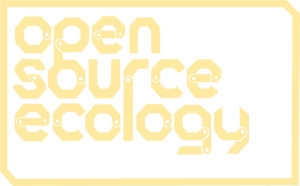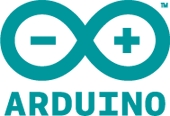- Building a 3D Digital Clock with ArduinoPosted 4 months ago
- Creating a controller for Minecraft with realistic body movements using ArduinoPosted 5 months ago
- Snowflake with ArduinoPosted 5 months ago
- Holographic Christmas TreePosted 5 months ago
- Segstick: Build Your Own Self-Balancing Vehicle in Just 2 Days with ArduinoPosted 6 months ago
- ZSWatch: An Open-Source Smartwatch Project Based on the Zephyr Operating SystemPosted 7 months ago
- What is IoT and which devices to usePosted 7 months ago
- Maker Faire Rome Unveils Thrilling “Padel Smash Future” Pavilion for Sports EnthusiastsPosted 7 months ago
- Make your curtains smartPosted 7 months ago
- Configuring an ESP8266 for Battery PowerPosted 8 months ago
The best Open Source Hardware Projects in the world. What’s your choice?
All of us are passionate defenders of open electronics and supporters of the movement for open source hardware, and so today we decided to submit a list, a tribute, to those which, in our point of view, are the most important and most promising initiatives out there.
Hopefully this list will bring some new inspiration to our community and maybe let you discover some project, you didn’t know it existed. Beyond the better-known and huge ones like Arduino – unquestioned instigator of the Open Source Hardware and Maker revolution – these projects could receive your support in the future or even see you participate.
Project: Open Source Ecology
Open Source Ecology defines itself as “a network of farmers, engineers, and supporters that for the last two years has been creating the Global Village Construction Set, an open source, low-cost, high performance technological platform that allows for the easy, DIY fabrication of the 50 different Industrial Machines that it takes to build a sustainable civilization with modern comforts”
Open Source Ecology, was founded in 2003 by Marcin Jakubowski but the project went visible on the world stage when Marcin gave this spectacular talk at a TED conference:
[iframe_loader src=”http://embed.ted.com/talks/lang/en/marcin_jakubowski.html” height=”349″ width=”425″ ]
To finally build all the machines in the GVCS would “lower the barriers to entry into farming, building, and manufacturing” and this spectacular idea could be
seen as a “life-size lego-like set of modular tools that can create entire economies, whether in rural Missouri, where the project was founded, in urban redevelopment, or in the developing world.”
The last time I was talking with Marcin he pointed me to Makeblock and told me that he wants to build this, in real life. As Marcin says in his TED profile page, Open Source Ecology “is not reinventing the wheel; it’s open-sourcing the wheel.”
The team recently released a fantastic video detailing philosophy. Bold.
Why important: promising implementation in real life and real development. Open Source at heart.
Project: Arduino
I’m not really sure that, back in the days when Massimo Banzi used to sit around in Trieste with his friends at the Bar Arduino (he told this story at a Maker event in Rome, Arduino platform was named after a town bar if I don’t go wrong), he was aware he was basically inventing the key to the next maker revolution.
Arduino’s achievements as a platform for DIY electronics are so wide that is almost impossible to count and name them: Massimo Banzi tried to do that during his TED talk in Glasgow last year.
[iframe_loader src=”http://embed.ted.com/talks/lang/it/massimo_banzi_how_arduino_is_open_sourcing_imagination.html” height=”349″ width=”425″ ]
From Drones, to Satellites and Baby Kicking tracking devices Arduino is simply being used…for everything.
Why important: Arduino is important since it was the unique key to empower a new generation of DIYers and Designers and contributed spread creative creation and help people to become inventors, entrepreneurs and makers.
Project: Rep Rap
The best thing about RepRap project is that it is a genuinely collaborative and generated a so large number of variations and interpretations that is even difficult to count. Even our 3Drag printer is based on the Rep Rap. The Rep Rap project shares with Open Source Ecology, some intrinsic motivations that go well beyond the desktop printing industry directly to be “humanity’s first general-purpose self-replicating manufacturing machine.”
The idea is that individuals anywhere on the planet, with a minimal expense, could access to system that would enable them to manufacture many of the artifacts used in everyday life.
At today, the RepRap project has released four 3D printing machines: “Darwin”, “Mendel“, “Prusa Mendel” (a simpler remix of normal Mendel mainly designed by Joseph Prusa) and “Huxley“. Developers named each RepRap after famous biologists, as “the point of RepRap is replication and evolution”.
Here’s another TED talk by Joseph Prusa in Vienna.
[iframe_loader src=”http://www.youtube.com/embed/viz4Ijahddg?hl=it&fs=1″ height=”349″ width=”425″ ]
Why important: Rep Rap is a promising approach to evolution of machinery design and the Rep Rap forking and remixing ecosystem shall be taken as a model.
In addition to these three well established projects, we would like to mention few others that are as interesting, and will be contributing this revolution in the coming years.
Wikispeed: project created by Joe Justice, a Seattle software engineer, who has decided to adapt the Agile development methodologies (an interview is available here) to the world of automotive. He has thus created an open source car and, above all, the process of Extreme Manufacturing. The promises behind Joe’s approach are many, and many companies are becoming to rethink their processes thanks to his newly developed approach. Inspite we’re talking about cars, the objective of Wikispeed is that of “rapidly solve problems for social good”
Open Materials: created by Catarina Mota, TED Global Fellow and Open Source Hardware Association Board Member, the project aims to build a shared knowledge base to build intelligent, open, accessible materials. Materials have a crucial role in empowering the DIY movement and Catarina’s pioneering work will likely become crucial in the upcoming days. Here’s an interview of Catarina, again from my personal blog, if you’re interested going deeper.
Open Wear: created by the Italian creative and hacktivist Zoe Romano among others, openwear project revolutionary looks to fashion industry (isn’t that hardware after all?) and enables fashion designers from all over the world to share and improve fashion designs effectively creating a – live evolving – fashion collection that can be produced and sold locally.
Open Structures: created by the Belgian Thomas Lommé, open structures reinvents the concept of a common geo-spatial grid to be used in the design of everyday objects, to allow recombination, reuse and re-cycling. The low-tech approach that open structures foreshadows the evolution of a manufacturing industry that will take resources and environmental impact more into account.
All these projects are contributing to make the open hardware movement stronger and help us figure out the future of hardware production.
We love them all: what’s your favourite? You know one that deserves to be on this list? let us know in the comments!
See you on Twitter! @meedabyte



















Pingback: World’s best Open Source Hardware Projects |